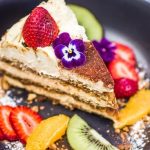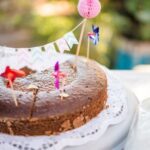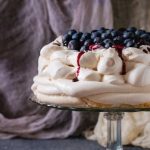Are you looking for tips on how to decorate a homemade cake? Whether you’re a novice baker or an experienced one, decorating a cake can be a fun and creative process.
From choosing the right tools and equipment to selecting the perfect theme, there are many factors to consider when decorating a homemade cake. In this article, we will guide you through everything you need to know about decorating a homemade cake, including design inspiration, basic techniques, tips for achieving professional results, and more.
When it comes to decorating a homemade cake, having the right tools and equipment is essential. From piping bags and tips to fondant molds and cutters, having the necessary supplies will make the decorating process much easier.
Additionally, choosing the right cake base and frosting will set the foundation for your design. Whether you opt for a classic vanilla sponge with buttercream frosting or a rich chocolate cake with ganache, the flavor and texture of your cake will play a crucial role in the overall presentation.
With an array of design inspiration available, it can be overwhelming to decide on a theme or idea for your homemade cake. Whether it’s for a birthday, wedding, or any special occasion, we’ll explore various themes and ideas that will help spark your creativity.
Furthermore, we’ll cover basic techniques such as piping and working with fondant that are essential for bringing your design to life. And if you’re looking to achieve professional-looking results at home, we have some valuable tips that will elevate your decorating skills.
Stay tuned as we dive into everything you need to know about how to decorate a homemade cake. Whether you’re looking to create mesmerizing floral designs or add decorative finishing touches like edible flowers and sprinkles, this article has got you covered. So grab your apron and let’s get started on showcasing your beautifully decorated homemade cake.
Necessary Tools and Equipment for Decorating
Decorating a homemade cake can be a fun and creative process, but having the right tools and equipment is crucial to achieving professional-looking results. Whether you’re a beginner or a seasoned baker, having the necessary supplies on hand will make the decorating process much smoother.
One of the most important tools for cake decorating is a good offset spatula, which is essential for spreading frosting evenly and smoothly on the cake. Piping bags and tips are also crucial for creating intricate designs and decorations. Additionally, a turntable makes it easier to frost the cake and ensures an even application.
When it comes to choosing equipment, having a quality stand mixer or hand mixer will make preparing frosting much easier. It’s also helpful to have a variety of decorating tools such as stencils, molds, and cutters to create different shapes and patterns for your cake.
Another essential tool for cake decorating is a cake leveler or serrated knife, which helps to create even layers when assembling your cake. And don’t forget about a good set of offset spatulas in various sizes to help with smoothing frosting onto different sized cakes.
In addition to these basic tools and equipment, investing in quality ingredients such as high-quality chocolate or vanilla extract can enhance the flavor of your homemade cake and elevate its overall presentation.
| Necessary Tools | Equipment |
|---|---|
| Offset spatula | Stand mixer or hand mixer |
| Piping bags and tips | Cake leveler or serrated knife |
| Turntable | Variety of decorating tools (stencils, molds, cutters) |
Choosing the Right Cake Base and Frosting
When it comes to decorating a homemade cake, choosing the right cake base and frosting is essential for achieving the desired result. The type of cake you use as your base will greatly impact how well it holds up under decorating techniques, while the frosting will determine not only the flavor but also how well decorations adhere to the cake.
For a sturdy base that can withstand intricate decorations, consider using a dense cake such as pound cake or sponge cake. These types of cakes are able to hold their shape and texture even when layered with frosting and decorations. On the other hand, if you prefer a lighter, fluffier cake, choose a chiffon or angel food cake for your base.
As for frosting, there are several options to consider. Buttercream is a popular choice due to its versatility and ability to hold intricate designs. Fondant is another option that provides a smooth surface for decorating and allows for more elaborate designs. Whipped cream and cream cheese frostings are best suited for more casual or rustic-style decorations.
Choosing the right combination of cake base and frosting will ensure that your homemade cake not only tastes delicious but also provides a solid foundation for all your decorative efforts.
| Cake Base | Frosting |
|---|---|
| Dense – Pound Cake, Sponge Cake | Buttercream, Fondant |
| Lighter – Chiffon Cake, Angel Food Cake | Whipped Cream, Cream Cheese Frosting |
Design Inspiration
When it comes to decorating a homemade cake, the possibilities are endless. Whether you’re looking to create a fun and whimsical design for a child’s birthday party or an elegant and sophisticated look for a wedding or anniversary celebration, choosing the right theme is key. Here are some popular themes and ideas to consider when decorating your next homemade cake.
Seasonal Themes
One simple way to find inspiration for decorating your homemade cake is to look at the season. For example, in the spring, you might opt for a floral theme with pastel-colored flowers made from frosting or edible blooms. In the fall, consider incorporating autumnal elements like leaves, pumpkins, or acorns into your design.
Celebration-Specific Themes
If you’re baking a cake for a specific celebration, such as a baby shower or retirement party, tailor your decorations to fit the occasion. For a baby shower, think about incorporating cute motifs like baby booties or rattles. For retirement parties, consider using decorations that reflect the individual’s hobbies or interests.
Personalized Themes
For truly unique and special cakes, consider creating personalized themes based on the recipient’s favorite things. This could be anything from their favorite sports team to their beloved pet. Personalized themes allow you to showcase your creativity and thoughtfulness in your cake decorating.
By choosing a theme that resonates with you or the recipient of the cake, you can infuse your homemade creation with personality and style.
Basic Techniques for Cake Decorating
When it comes to decorating a homemade cake, there are several basic techniques that can elevate your creation from ordinary to extraordinary. Whether you’re a beginner or an experienced baker, mastering these techniques can help you create stunning and professional-looking cakes that will impress your friends and family.
Piping
One of the most versatile and essential skills for cake decorating is piping. This technique involves using a pastry bag and various tips to create intricate designs, borders, and lettering on your cake. Different tips can produce different effects, such as rosettes, shells, leaves, and more. Learning how to control the pressure and movement of the pastry bag will allow you to create beautiful patterns and designs on your cake.
Fondant
Fondant is a smooth, pliable icing that can be rolled out and draped over a cake for a flawless finish. It’s perfect for creating decorative elements such as flowers, bows, and figurines. Working with fondant does require some practice and patience, but once mastered, it opens up endless possibilities for creative cake design.
Buttercream Texture
Another important technique for cake decorating is achieving the perfect buttercream texture. Whether you want smooth sides or textured finishes like ruffles or waves, knowing how to manipulate buttercream frosting is essential. By experimenting with different tools – such as spatulas and combs – you can achieve a wide variety of textures that bring visual interest to your cake.
Mastering these basic techniques will provide a strong foundation for your cake decorating skills. With practice and creativity, you’ll be able to take full advantage of these methods to decorate beautiful homemade cakes that look as if they were made by a professional baker.
Tips for Achieving Professional Looking Results
Achieving professional looking results when decorating a homemade cake can seem daunting, but with the right techniques and tips, it is definitely achievable. Here are some tips to help you elevate the appearance of your homemade cakes:
- Use a turntable: A cake turntable is an essential tool for achieving smooth and even frosting on your cake. It allows you to easily rotate the cake as you spread the frosting, resulting in a more professional finish.
- Invest in quality tools: While decorating a cake, having the right tools can make all the difference. Quality piping bags, tips, offset spatulas, and bench scrapers will help you achieve clean lines and professional-looking decorations.
- Practice makes perfect: Don’t be afraid to practice your decorating skills on parchment paper or a cutting board before applying them to your cake. This will give you a chance to perfect your technique before working on the actual cake.
When it comes to achieving professional looking results when decorating a homemade cake, attention to detail is key. By following these tips and practicing your techniques, you can elevate the appearance of your cakes and impress your friends and family with beautifully decorated creations.
Overall, by using the right tools, practicing your skills, and paying attention to detail, you can achieve professional-looking results when decorating your homemade cakes. With patience and dedication, you will be able to create stunning cakes that look like they were made by a professional baker.
Decorative Finishing Touches
When it comes to decorating a homemade cake, the finishing touches can really take your creation to the next level. Adding decorative elements such as edible flowers, sprinkles, and other embellishments can turn a simple cake into a stunning masterpiece. Here are some ideas for adding those final touches to your homemade creation:
- Edible Flowers: Edible flowers are a beautiful and delicate way to adorn a cake. You can use fresh flowers that are safe for consumption, such as roses, violets, or pansies. Simply place the flowers on top of the frosted cake or use them to create a floral pattern around the edges.
- Sprinkles: Sprinkles are a classic and fun way to add color and texture to your cake. Whether you choose traditional rainbow sprinkles or opt for themed shapes like hearts or stars, sprinkles can be easily applied to the frosting for a festive look.
- Other Decorative Elements: Consider using chocolate shavings, fresh fruit slices, or even edible glitter to add visual interest and flair to your homemade cake.
By incorporating these decorative finishing touches into your cake decorating process, you can elevate the overall appearance of your creation and make it truly special.
Remember that when using decorative elements like edible flowers or fresh fruit, it’s important to consider any potential allergies that your guests may have. Be sure to communicate with anyone who will be enjoying your cake so that everyone can safely indulge in your beautifully decorated creation.
Incorporating these finishing touches is an easy yet impactful way to make your homemade cake look professional and polished. Whether you’re celebrating a birthday, anniversary, or simply want to showcase your baking skills, these decorative elements will surely impress your guests.
Troubleshooting Common Decorating Challenges
When it comes to decorating a homemade cake, there are bound to be some common challenges that may arise during the process. However, with the right tips and techniques, these challenges can be easily overcome to achieve a beautifully decorated cake that looks and tastes amazing.
One common challenge when decorating a homemade cake is achieving a smooth and even frosting on the cake. To troubleshoot this issue, you can try using a bench scraper or offset spatula to smooth out the frosting layer. Another tip is to chill the cake in the refrigerator for a few minutes before adding another layer of frosting, as this can help prevent crumbs from getting into the icing.
Another common challenge is piping decorations onto the cake, such as writing messages or creating intricate designs. If you find that your piping is not coming out as smoothly as you’d like, try practicing on a piece of parchment paper first to get the hang of it.
Additionally, make sure that your frosting is at the right consistency – if it’s too stiff, it may be difficult to pipe, and if it’s too soft, it may not hold its shape.
Lastly, one of the most common challenges when decorating a homemade cake is keeping the decorations in place. To troubleshoot this issue, consider using edible glue made from mixing water and confectioner’s sugar or tylose powder with water for fondant decorations. This will help ensure that your decorative elements stay put on the cake without sliding or falling off. By implementing these troubleshooting tips, you can tackle common decorating challenges and achieve professional-looking results for your homemade cakes.
Overall, mastering how to decorate homemade cakes might take time and practice but with these tips in mind, and by experimenting with different techniques and tools, anyone can create beautifully decorated cakes at home.
Conclusion
In conclusion, decorating a homemade cake can truly elevate the overall presentation and flavor of your creation. With the right tools and equipment, choosing the perfect cake base and frosting, finding design inspiration, mastering basic techniques, and adding decorative finishing touches, you can showcase a beautifully decorated homemade cake that will impress your friends and family.
By learning how to decorate a homemade cake using various techniques such as piping and working with fondant, you can unleash your creativity and bring your design ideas to life. Whether it’s for a birthday, anniversary, or any special occasion, a beautifully decorated homemade cake can be the centerpiece of your celebration.
Incorporating edible flowers, sprinkles, or other decorative elements can add an extra layer of sophistication to your cake design. And by following the tips for achieving professional looking results and troubleshooting common decorating challenges, you’ll be well on your way to creating stunning works of art that not only look amazing but also taste delicious. So go ahead, put your newfound skills to the test and start decorating your own homemade cakes today.
Frequently Asked Questions
How to Decorate a Simple Homemade Cake?
Decorating a simple homemade cake can be done in a few ways to make it look more appealing. You can start by adding a thin layer of frosting and then using a piping bag to create some swirls or patterns on the top.
Adding colorful sprinkles, fresh fruits, or edible flowers can also instantly elevate the look of your homemade cake.
How Do You Make a Plain Cake Look Fancy?
To make a plain cake look fancy, you can play with different textures and flavors. For example, you can drizzle the top with a rich chocolate ganache or caramel sauce, add some edible gold leaf for a touch of luxury, or even layer the cake with flavored whipped cream or fruit compote to add depth to its appearance and taste.
How Do You Make a Homemade Cake Look Professional?
Making a homemade cake look professional involves attention to detail and presentation. It’s important to ensure that the cake layers are evenly filled and frosted, and smooth out any imperfections on the surface.
Using decorative tools like pastry bags, fondant cutters, or stencils can help create intricate designs for a polished finish. Finally, placing the cake on a decorative stand or serving platter adds that extra bit of professionalism to your presentation.

Welcome to my blog about home and family. This blog is a place where I will share my thoughts, ideas, and experiences related to these important topics. I am a stay-at-home mom with two young children. I hope you enjoy reading it! and may find some helpful tips and ideas that will make your home and family life even better!





